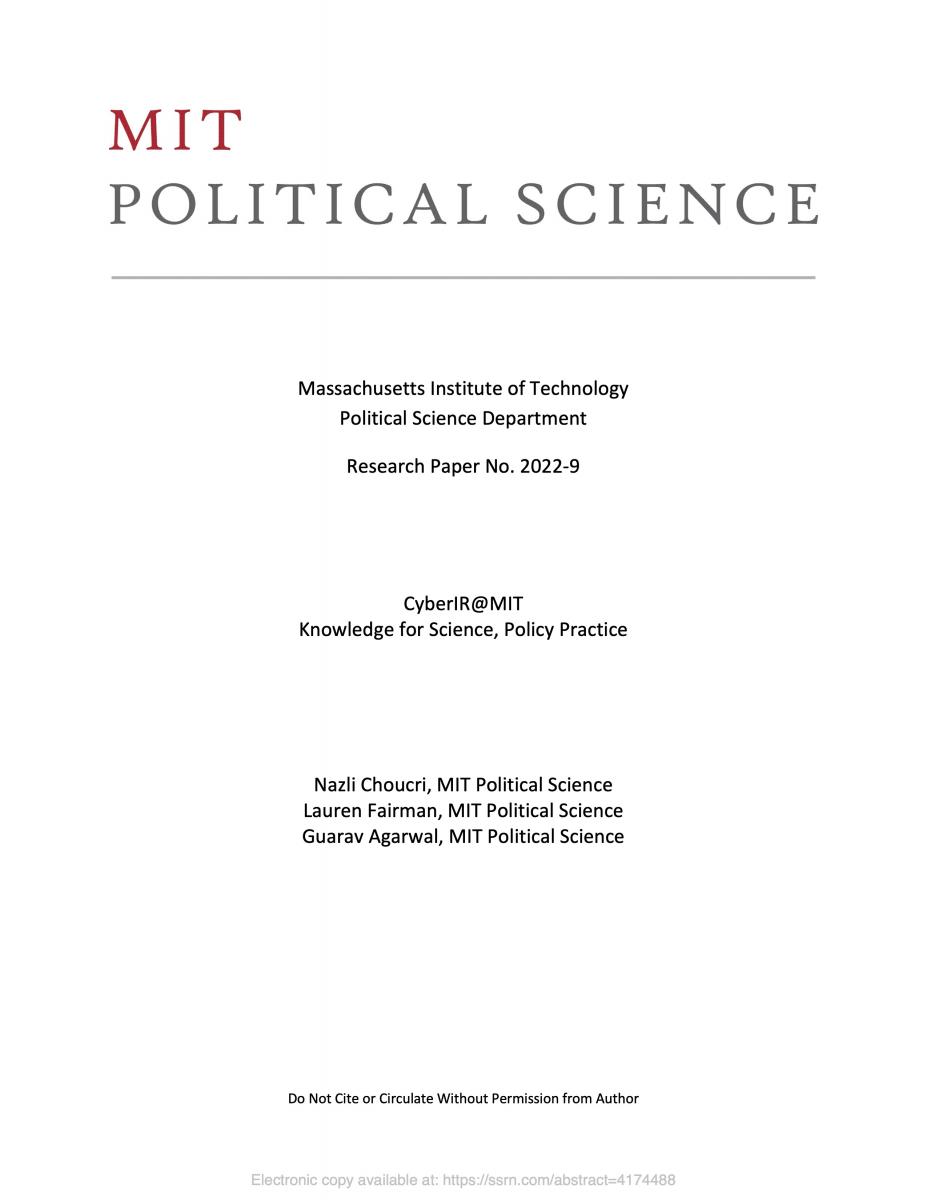The research explorations leading to CyberIR@MIT examined the detailed features of the two arenas – cyberspace and international relations – signaling structures and processes.
Given that cyberspace and the international system have been viewed as separate domains of interaction – each based on its own design principles – a joint system must first capture the basic features of each individual system and second, define the rules for their interconnections (See International Relations in the Cyber Age: The Co-Evolution Dilemma , 2019).
Cyberspace
Defined as the virtual system enabled by Internet, the core of cyberspace. The familiar view that distinguishes between the physical infrastructure of the Internet and its role as a carrier of information, is used to frame a four-layer model. The model consists of the physical layer, the logical layer, the information later, and the people layer.
The model is useful to describe both the technology itself, the actors that make and shape it, and the functions they perform, as well the “static” versus the more “dynamic” features of each layer. Sophisticated controls at the information layer are required to address emergent international contentions.
International System
Defined by the traditional view of international relations framed in socially-centered hierarchical terms by the familiar levels of analysis—the individual, the state, and the international system. Anchored in the principle of sovereignty, this concept defines the entities in the system.
We expand the conventional view by:
- (1) Defining the global system as an overarching level of analysis,
- (2) Extending the levels framework beyond the social domain to include the natural environment (life-supporting properties) and the constructed environment (Internet-enabled cyberspace), and
- (3) Recognizing the diverse forms of system dynamics, transformation, and change due to the construction of cyberspace.
Joint Cyber-IR Domain
Finally, the Cyber-IR domain is constructed by connecting the levels of analysis in international relations and the layers of the Internet. This approach provides a view of the “whole” and the “parts” and helps contextualize actors and entities, interests and activities, as well as sources of change and potential impacts. It is designed to identify the empirical features located at the intersection of levels and layers.
It is useful to signal that:
- (1) Unlike the layers structure, the permeability of influences across levels of analysis is the rule not the exception;
- (2) The extent to which situations and behaviors at one level influence structure and process across another varies considerably; and
- (3) Despite evidence of increasing cyber access worldwide, the operational norms and practices vary considerably within levels and across jurisdictions.
The alignment strategy gives us a model within which actors and actions can be positioned and evaluated. In principle, all actors and all cyber functions can be viewed within this framework. Drawing on lateral pressure theory, introduced earlier, we can derive some basic principles for identifying sources and consequences of transformation.
This process yields the interconnections between foundational features of cyberspace, on the one hand, and structure and process in international relations, on the other. It should provide a full census of major actors in conjunction with the modes of interaction in their respective contexts.
This view will also enhance the capabilities and methods of social scientists and scholars, as well as analysts of international relations and other areas of social interaction, to understand and incorporate the larger role and character of cyberspace in diverse social contexts.
Considerable literature is already developing around these issues as the scholars, analysts, practitioners, and policy makers seek to grapple with the new realities.



